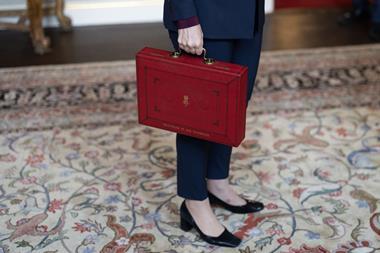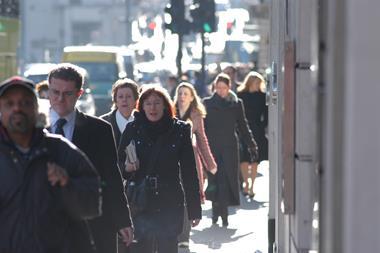Those sums – which are for England and Wales alone – show the sheer scale of threat retailers are facing from rate rises at the worst possible time, which is why Retail Week is calling on the Government to rethink its plans for the tax in its Rate Rage campaign.
Business rates aren’t a sexy subject. It’s a complex world made even more complicated by the different systems that apply in the four nations within the UK. But it’s an issue retailers cannot ignore because it’s a big burden that’s about to get much bigger.
It’s a particularly sensitive one for retailers too, simply because they tend to occupy hundreds of stores, whereas most other businesses have one or a handful of offices or warehouses. “Because we use a lot of property business rates have a profound impact on retailers’ viability,” says BRC director-general Stephen Robertson. “With trading conditions getting tougher, it’s vital that the burdens on retailers are not increased further.”
The frustration is that at a time when the Government is looking at cutting taxes in order to stimulate growth and intervening to help other sectors of business, the spectre of huge increases in property tax looms over retailers, reinforcing concerns that the industry’s vital role in the economy – as the largest private sector employer in the UK – is not appreciated in the corridors of power.
It’s not that the system has changed to make it unfair to retailers. But what has happened is that the timing of key dates has proved cruelly unfair on retailers. Here’s why:
Why your bill will go up in 2009
While the main changes in business rates happen around the five-yearly revaluation of property, every year the “multiplier” is reviewed. This is the figure in the pound that is multiplied by the value of your property to come up with your bill. This year in England it is 46.2p or 45.8p for small businesses.
Traditionally this has been reviewed based on the RPI inflation figure in the preceding September, so bills for the 2009/10 financial year will be increased by the September 2008 inflation figure. But as retailers will be all too aware, September signified the high-water mark in inflation, when RPI reached 5 per cent. Since then inflation has declined and further steep falls – even possibly deflation – are expected.
So when retailers get their bills in April they will face a big rise in rates. “All the indicators show RPI is going to start falling,” says Blake Penfold, director at property consultancy GL Hearn. “The increase will look incongruous by April in the context of RPI.” Penfold says he has written to the relevant government bodies to point out this discrepancy but has had no reply in England, and those from Scotland and Wales indicate that there is little hope of leniency in how the inflation level is applied.
Why your bill will go up in 2010
If 2009’s bills are likely to be greeted with a grimace, 2010’s are set to be a horror show, as these will be the first under the 2010 revaluation. Again, it’s not the system that has changed but when dates have fallen that has hit retailers hard.
Since the system was set up the revaluation has been based on the increase in property values between the April two years before and the April five years before that. So the 2010 revaluation is based on the difference in property values between April 2008 and April 2003.
Unfortunately for retailers, April 2008 represents the peak of property values in the retail sector. Even worse, the other main types of commercial property – offices and warehouses – barely increased in value at all over the five-year period. “The danger is you’re capturing a point in the market that, when it comes into force in two years’ time, looks wildly unrealistic,” says Penfold.
What this means is that retailers will face massive increases in their bills while other occupiers get away almost scot-free. According to GL Hearn, retailers face an average increase of 16 per cent in their rateable values, while office occupiers face a 3.1 per cent rise and warehouse tenants just 1.5 per cent. While transitional arrangements are put in place to smooth over increases, they will by no means eliminate the pain.
In fact, the implications will be even worse for some retailers, with supermarkets likely to be most badly affected. Grocers face an average rise of 19.7 per cent, with retail warehouses also facing a big rise of 17.4 per cent, despite being the part of retail worst affected by the downturn.
Shopping centres will experience a rise of 15.7 per cent and even high street shops, which have seen the least growth, will still face an average 11.4 per cent increase in rateable values.
Ironically one of the main reasons that the values of supermarkets are so strong is the strength of their covenants, which – combined with the scarcity of new supermarkets – has helped push their values up faster than any other type of property.
This explains why Tesco chief Sir Terry Leahy and Sainsbury’s boss Justin King were particularly outspoken on this issue in last week’s Retail Week. For businesses that are run on very tight margins, the extra costs are bound to have an impact and could lead to greater costs being passed on to customers at a time when consumer confidence is already subdued.
“April 2008 was clearly a peak,” says Leahy. “You can’t ignore what’s happened subsequently and retailers are struggling with customers with less money to spend. Why should retailers be paying artificially high taxes as a result of an arbitrary date set for a revaluation?”
Again, retailers could find some stores much worse affected than others. Out-of-town retail parks are struggling horrendously, with retailers that sell bulky goods such as furniture and electricals bearing the brunt of the recession. But in Scotland there has been massive rental growth in this area, so GL Hearn expects relevant rates liabilities to soar more than 22 per cent. With many retailers in this part of the market struggling, such a big leap could push some weaker players over the precipice.
Why your bills might go up even more
It’s not just the revaluation and the annual increase that might hit retailers. A raft of changes to the system are set to pile up the burdens on the industry.
Retailers have already expressed anger at the abolition of empty rates relief earlier this year, which has led to the farcical situation of them demolishing empty warehouses to avoid paying rates on them.
The BRC is also angry about proposals to let local councils levy a business rate supplement, allowing an extra 2p in the pound of rateable value – effectively a 5 per cent increase in bills – in order for the council to pay for improvements to the local area.
Retailers already fund investment in local areas through Business Improvement Districts and the BRC argues that this will effectively add a new local tax to the existing centralised business rates system. It argues that if the system does go ahead, it must be directly tied to investment in local transport infrastructure projects and be supported by a vote of local businesses.
A further levy to help the taxpayer benefit from increases in property values when planning permission is granted – called the community infrastructure levy – could also add extra cost and complexity.
“Any increase in business rates in April 2009 and the expected enormous increases coming from revaluation in 2010 would only make things worse,” says Robertson. “In recession our role is even more important. Government should be helping, not hindering. It must review the scale and impact of these local taxes as a matter of urgency.”
2010 may sound a long way off but it will be here before we know it. The industry needs to come together to fight these increases in taxes before they become a foregone conclusion. Signing up to our campaign is a good place to start.
LEND YOUR SUPPORT
The industry needs to come together in the fight against business rate rises.
Find out more about our campaign at retail-week.com/rates and send us your views at rates@retail-week.com


























No comments yet